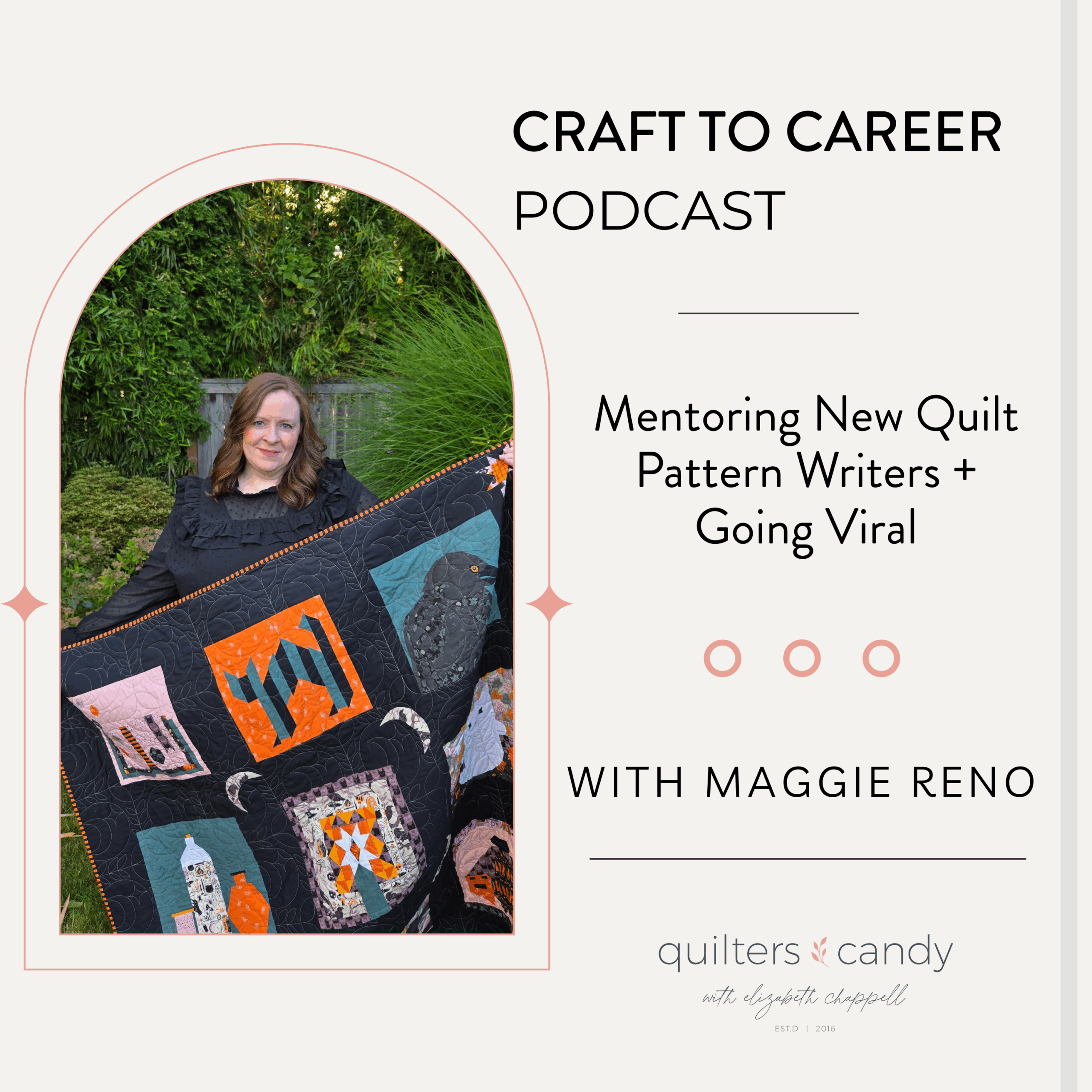MORE BLOG POSTS LIKE THIS ONE
Did you enjoy this tutorial? Be sure to check out these free tutorials:

August 13, 2025
Discover how to mentor new quilt pattern designers, run a Halloween-themed sew-along, and navigate going viral on Instagram. Featuring Maggie Reno of Snug and Stitch on the Craft to Career podcast. In this episode of the Craft to Career podcast, Elizabeth Chappell of Quilters Candy interviews Maggie Reno of Snug and Stitch, an experienced quilt pattern designer and mentor. Maggie, […]
Each week get insights on how to turn your craft into a successful career. With both guest speakers and tips from myself, you get valuable, free education on the Craft to Career podcast!